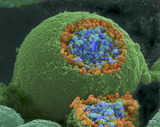
This resource is a video abstract of a research paper created by Research Square on behalf of its authors. It provides a synopsis that's easy to understand, and can be used to introduce the topics it covers to students, researchers, and the general public. The video's transcript is also provided in full, with a portion provided below for preview:
"Learning something new not only changes our perspectives and behavior – it actually changes the structure of our brains. Memories and experiences are recorded in the brain by altering the physical connections between neurons. Until recently, however, the protein signals that cause these tiny structural changes were too small to measure with available imaging methods. But researchers at the Max Planck Florida Institute for Neuroscience created ultra-sensitive sensors and revealed the activity of two of the proteins that write memories into neural circuits in the brain. Individual neurons have many branches, or dendrites. And each dendrite can be covered with thousands of tiny bumps called spines, where messages are received from other neurons. Changes in spine size are one way memories are recorded-when lots of messages are being passed and a spine is very active, it gets bigger. Many proteins need to be activated to make spines grow..."
The rest of the transcript, along with a link to the research itself, is available on the resource itself.
- Subject:
- Applied Science
- Health, Medicine and Nursing
- Material Type:
- Diagram/Illustration
- Reading
- Provider Set:
- Video Bytes
- Date Added:
- 09/20/2019



